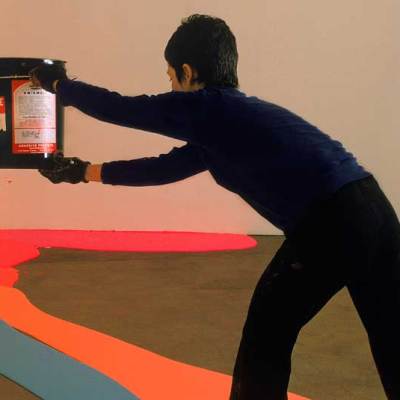It is a considerable feat to gather together 40 scattered pictures by Piero di Cosimo (1462–1522), the Florentine artist who Vasari considered ‘the great genius’ – and this when contemporaries included Botticelli and Leonardo. The National Gallery in Washington has done just that, enabled by the Uffizi, which charts new territory in its first partnership with another museum for a painting show (see our 2015 preview). For comparison, the last di Cosimo show pulled just six of his pictures together, plus one misattributed painting, in 1938 in New York.
It is easy when visiting such shows to focus on rare loans from far-flung places (and some in this show have never before left the church for which they were painted), and to give cursory attention to the pieces that are always nearby, readily available. But for this exhibition the centrepiece is arguably the National Gallery’s own big, bold, mature and newly conserved The Visitation with Saint Nicholas and Saint Anthony Abbot, which di Cosimo painted around 1489–90 when he was 27 years old. Emerging from a meticulous restoration, it now radiates high Renaissance splendour.
It is a powerful picture that already displays di Cosimo’s particular visual language, blending his mystical imagination with acute observations from the natural world and his sensitivity to human emotions. The monumental figures of Mary, cloaked in dazzling azure blue, and Elizabeth stand central. Mary’s hand is on Elizabeth’s shoulder to respectfully reassure her as one woman to an older one, and they look at each other intensely as if they know the significance of the sons they will bear.
The focus of the painting, both physical and spiritual, is their joined hands. Neither the studious saints crouching in front of them, nor the carefully observed landscape behind them (with its vignettes of the Annunciation, shepherds, magi, massacre of the innocents – foretastes of events to come), distracts from the two women’s magisterial importance. Yet behind this grandeur there are lively details that would have occupied worshipers gazing at the painting during daily Mass: a frolicking lamb, a monkey running along a building, a wallflower which all educated Florentines would know symbolised divine love. Looking closely at the painting there are reminders of the arrival in Florence in 1483 of Hugo van der Goes’s Portinari triptych and the impact of Flemish art on Florentine artists such as Filippino Lippi, Domenico Ghirlandaio and di Cosimo.
Di Cosimo made The Visitation for the Capponi family chapel in the Augustinian Church of Santo Spirito in Florence, and although no document is yet known that specifies the commission, Vasari’s ecstatic description of it tells us much. After a disastrous fire in 1471, Giuliano da Sangallo, di Cosimo’s patron and close friend, oversaw a total renovation of the building that included persuading the big Florentine families to commission local artists to decorate their private chapels, in order to give the interior a sense of visual unity. While di Cosimo’s altarpiece has gone, much of the art scheme is still in place today.
To take full advantage of the National Gallery setting and to set di Cosimo among his Florentine peers, visitors can stroll around to the permanent galleries and find no less than seven pictures by Botticelli and Leonardo. The Uffizi setting, when the show travels this summer, will be just as extraordinary, and my bet is The Visitation will be an outstanding star there, too.
‘Piero di Cosimo: The Poetry of Painting in Renaissance Florence’ is at the National Gallery of Art, Washington, from 1 February–3 May 2015. A different version of the exhibition is at the Galleria degli Uffizi, Florence, from 23 June–27 September 2015.
Related Articles:
12 Days: Louise Nicholson picks some likely highlights of 2015



